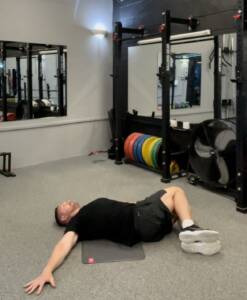
Warming up means raising your heart rate, which increases blood flow, raises your body temperature and wakes up your muscular and nervous system. Warm-up exercises improve your range of motion and address any imbalances, limitations or tightness your body has.
To maximise your time spent working out, you need the right muscles working before you stress them with a run on a treadmill or heavy weightlifting session. Warming up ensures you’re recruiting the right muscles for your specific workout as you move from exercise to exercise.
Warm-up exercises also teach you how to move. Once you’ve freed up your range of motion, it’s time to use it to your advantage. Start with a small focus to improve your capacity to move, and then use the remainder of the warm up (and the workout) to solidify that new range. Ultimately, range of motion is pointless if you don’t have the capacity to use it and control it.
Tips for a More Effective Warm Up
What follows is a basic warm-up that should help just about everyone move better, feel better and perform better. But remember, the best warm up is the one that’s written just for you.
1. Begin by foam rolling. Some soft-tissue work using a foam roller or other massage tool can help further increase blood flow to your muscles. Target three to four big muscle groups, including your quads, lats, glutes and pecs.
2. Put a premium on breathing. Breathing is vital to your workout, so make sure to focus on it throughout both your warm up and workout. The diaphragm plays an enormous role when it comes to overall body positioning and functionality, so be sure to give it some attention.
3. Use dynamic stretches and exercises. A good warm-up involves more dynamic activity toward the end to help bring it all together. The human body is incredibly complex, and good movement involves a lot of working pieces. Use exercises that work multiple joints or muscles (or the entire system) and incorporate movement.
